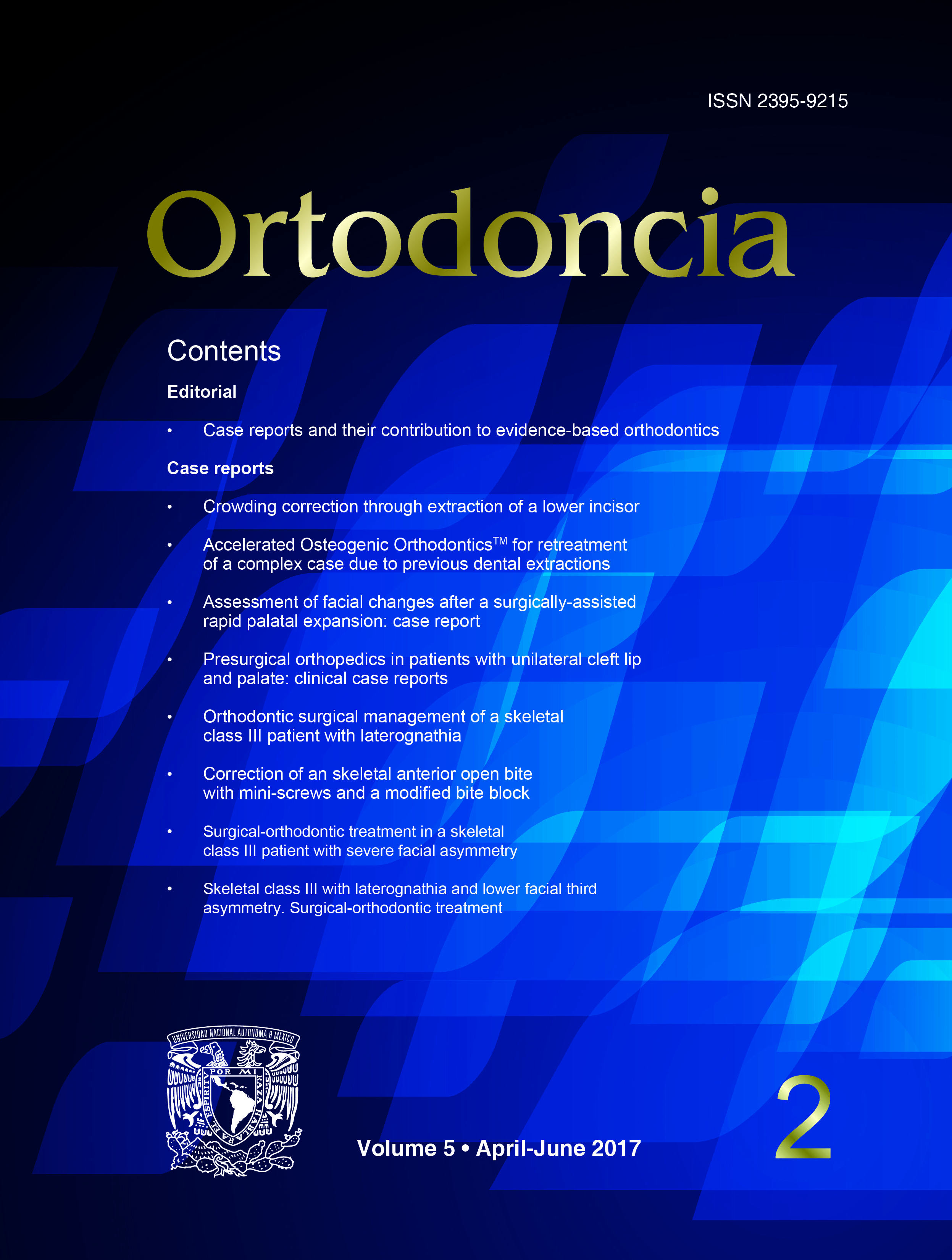Surgical-orthodontic treatment in a skeletal class III patient with severe facial asymmetry
Contenido principal del artículo
Resumen
Craniofacial asymmetry is expressed as the difference in size
between two parts of the face. It is originated by a discrepancy
in size and position between the cranial base and the maxilla,
between the cranial base and the mandible, or between the
maxilla and the mandible. When the craniofacial asymmetry
is severe and the patient has completed growth, the indicated
treatment is performed in conjunction with orthodontics and
orthognathic surgery. The clinical case of a 20-year-old female
patient who underwent orthodontic-surgical treatment of a skeletal class III malocclusion due to maxillary retrusion and mandibular prognathism, severe facial asymmetry, right condylar hyperplasia, right side maxillary inclination, anterior open bite and transversal compression of the maxillar is hereby presented. The treatment goals were to provide a stable occlusion, to obtain facial symmetry and improve function by the correction of the transverse, sagittal and vertical dento-skeletal problem. The treatment plan was orthodontic-surgical using 0.022” × 0.025” slot Roth prescription, which consisted in three phases: 1) Pre-surgical orthodontics, 2) surgical phase and 3) Post-surgical orthodontics. The surgicaltreatment plan consisted of a triple orthognathic surgery: Le Fort I osteotomy (asymmetric maxillary intrusion of 3 mm on the right side and 2 mm on the left side and a maxillary advancement of 3 mm), asymmetric bilateral sagittal osteotomy of the mandible and mentoplasty. In addition to these surgical procedures, a nasal post of septal cartilage was also placed. The obtained results, both facial and occlusal, were satisfactory, achieving the orthodontic goals and fulfilling the patient’s expectations. Conclusions: Orthognathic surgery in conjunction with orthodontics offers a definitive solution for dentofacial corrections in patients who have completed their growth period; giving the patient facial symmetry, occlusal stability and adequate function of the stomatognathic apparatus. The establishment of a common diagnosis and objectives between the maxillofacial surgeon and the orthodontist in an orthodontic-surgical case is crucial to obtain an adequate and favorable result for the patient.
